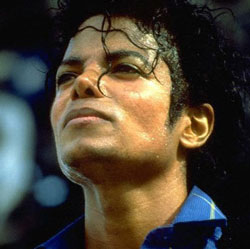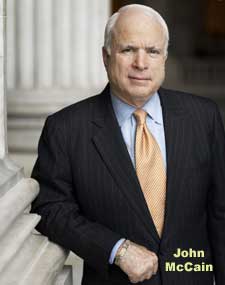
Houston City Council Woman Jolanda Jones has been holding people's feet to the fire over incidents of sexism and racism inside HFD
(Houston TX) we have a problem. Sadly its the age old problem of racism and sexism which was supposed to be disappearing in this new Era of Obama within a city that is now the third largest in the country. For those who haven’t been following the drama, what’s been going on is an ugly series of racial incidents including 2 or 3 noose hanging incidents, racial epithets being spewed over the departments tactical radio system and disturbing remarks targeting two women sprawled on the walls of Houston’s fire station #54.
At the center of the most recent controversy are two women Paula Keyes and Jane Draycott who reported that for months they’ve had to endure a series of incidents including the recent defacing of a picture of Draycott’s daughter who was killed in a car accident. Someone wrote ‘dead’ across the photo while referring to her as a ‘nigger lover’ and a writing the words ‘die’ on her picture. Here’s a link to a local news report on this incident
http://abclocal.go.com/ktrk/story?section=news/local&id=6905444
Other incidents include having someone turn off the cold water while taking a shower so the women would get scalded and tossing firecrackers while using the bathroom stalls. The incidents were appalling to say the least.
This recent drama comes at the heels of two high profile noose hanging incidents including one involving a fire fighter cadet who during a training tied a noose and made some racial remarks. He was allowed to resign but then later reapplied and has successfully completed his courses. He is soon to join HFD.

Captain Keith Smith a 28 year veteran said he kept a noose in his locker to remind him of his early training days
The other incident involves a white HFD captain named Keith Smith who was discovered to have a noose hanging in his locker earlier this year. Smith was reprimanded by the Chief for the incident while the City Council coughed up a bunch of money-60 thousand dollars for sensitivity training. Smith a 28 year veteran who has held the rank of captain for 15 years recently issued a public apology where explained that he kept the noose as some sort of memento for his training days. He said he had no idea the noose meant something racial.
One has to wonder what sort of training Smith had received. Maybe things were more racial charged 28-30 years ago. I find it hard to believe that Smith was that oblivious when you consider the national brouhaha that occurred because of the noose hanging incidents in Jena, La (Jena 6) which is about 6 hours away from Houston. Was Smith not following the news when all this went down back in Fall of 2007?
What’s even crazier is that Rev D.Z. Cofield vice president of the Houston NAACP defended Smith saying he was unfairly being put on blast and they recommended that the letter of reprimand be removed from the captain’s record.
I’m not sure how they came to this conclusion, but these series of incidents have not sat well with Houston City Council member Jolanda Jones who has been on the case. She’s been pushing hard demanding that the city implement a zero tolerance policy for sexism and racism. She also rebuffed the assertions that the racial incidents were isolated by getting a letter signed by 68 retired, current and former emploeyees who noted that there has long been a pattern of racism and sexism. Jones has even gotten involved in a war of words with HFD Union chief Jeff Canyon who accused her of calling him a House Negroe.
http://abclocal.go.com/ktrk/story?section=news/local&id=6930503
In our interview w/ Jones she expressed the litany of incidents and the gravity behind them
Since our interview a group of women firefighters have met with Houston Mayor Bill White to say that they are proud of of the fire department and that although there are some problems things aren’t all that bad.
http://abclocal.go.com/ktrk/story?section=news/local&id=6948558
Written by Davey D for www.theSouthernShift.com








 A flick came out in the mid 90’s called “Tales from the Hood,” it was kinda like a ghetto version of “Scared Straight;” only with zombies. Perhaps the best part of the movie dealt with a gangsta named Krazy K who was undergoing some heavy sci fi rehabilitation by being forced to relive scenes of the many murders of black folks that he had committed against a backdrop of lynchings and cross burnings. After listening to the latest youtube hit “Whip it “(Like a Slave), I wonder if such a rehab session would work on Lil Wayne? Naw, he’d probably just sit there with that spaced out permanent grin on his face sippin’ Sizzurp through a styrofoam cup and mumbling auto tune lyrics as visions of black death flash before his eyes.
A flick came out in the mid 90’s called “Tales from the Hood,” it was kinda like a ghetto version of “Scared Straight;” only with zombies. Perhaps the best part of the movie dealt with a gangsta named Krazy K who was undergoing some heavy sci fi rehabilitation by being forced to relive scenes of the many murders of black folks that he had committed against a backdrop of lynchings and cross burnings. After listening to the latest youtube hit “Whip it “(Like a Slave), I wonder if such a rehab session would work on Lil Wayne? Naw, he’d probably just sit there with that spaced out permanent grin on his face sippin’ Sizzurp through a styrofoam cup and mumbling auto tune lyrics as visions of black death flash before his eyes. Unlike other rappers, Lil Wayne aka Weezy has never prided himself as being the “Malcolm X of the Hip Hop generation” and when he has his frequent run ins with the law he isn’t all over the TV yellin’ that he is “a black man being persecuted in America just for being black” a la Dr. Henry “Skip” Gates.
Unlike other rappers, Lil Wayne aka Weezy has never prided himself as being the “Malcolm X of the Hip Hop generation” and when he has his frequent run ins with the law he isn’t all over the TV yellin’ that he is “a black man being persecuted in America just for being black” a la Dr. Henry “Skip” Gates.





 By now everyone has heard about the unfortunate situation that went down Wednesday night on the Texas Southern University campus during a huge community event called ‘Trae Day’which was a day long celebration meant to honor popular Houston rapper Trae the Truth and give out free school supplies. According to police reports, 6 people were injured in a drive by shooting as things were winding down.
By now everyone has heard about the unfortunate situation that went down Wednesday night on the Texas Southern University campus during a huge community event called ‘Trae Day’which was a day long celebration meant to honor popular Houston rapper Trae the Truth and give out free school supplies. According to police reports, 6 people were injured in a drive by shooting as things were winding down. 
